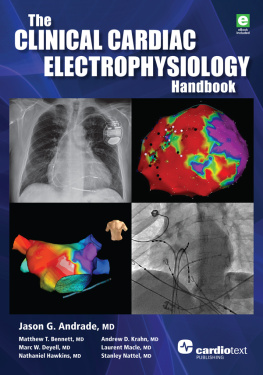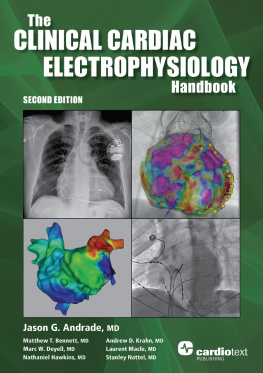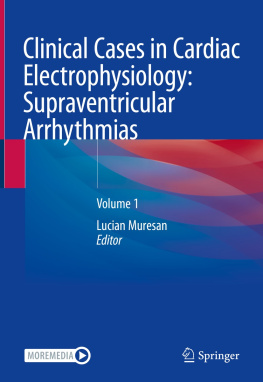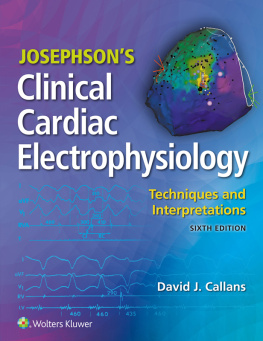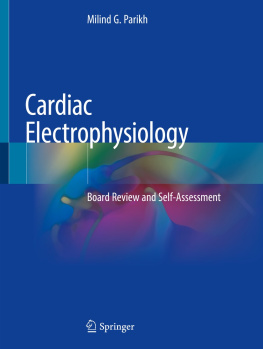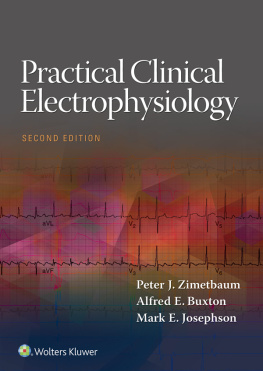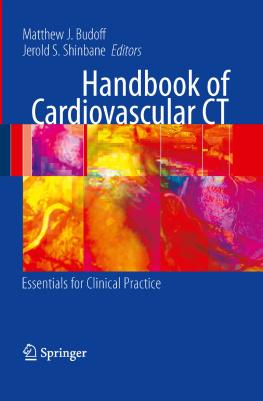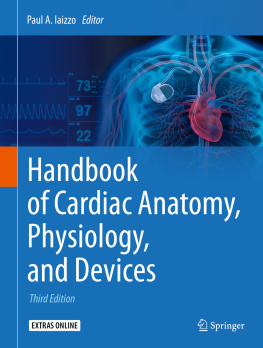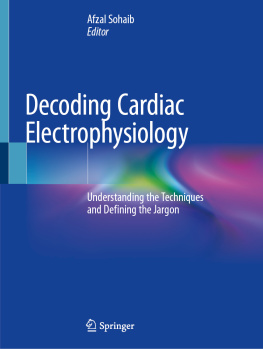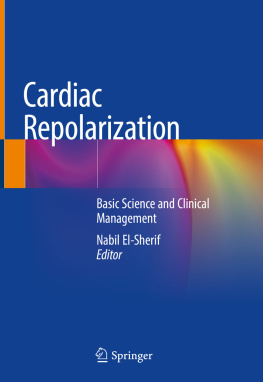Jason Andrade - The Clinical Cardiac Electrophysiology Handbook
Here you can read online Jason Andrade - The Clinical Cardiac Electrophysiology Handbook full text of the book (entire story) in english for free. Download pdf and epub, get meaning, cover and reviews about this ebook. City: Minneapolis;MN, year: 2016, publisher: National Book Network International;Cardiotext Publishing, genre: Romance novel. Description of the work, (preface) as well as reviews are available. Best literature library LitArk.com created for fans of good reading and offers a wide selection of genres:
Romance novel
Science fiction
Adventure
Detective
Science
History
Home and family
Prose
Art
Politics
Computer
Non-fiction
Religion
Business
Children
Humor
Choose a favorite category and find really read worthwhile books. Enjoy immersion in the world of imagination, feel the emotions of the characters or learn something new for yourself, make an fascinating discovery.
- Book:The Clinical Cardiac Electrophysiology Handbook
- Author:
- Publisher:National Book Network International;Cardiotext Publishing
- Genre:
- Year:2016
- City:Minneapolis;MN
- Rating:3 / 5
- Favourites:Add to favourites
- Your mark:
- 60
- 1
- 2
- 3
- 4
- 5
The Clinical Cardiac Electrophysiology Handbook: summary, description and annotation
We offer to read an annotation, description, summary or preface (depends on what the author of the book "The Clinical Cardiac Electrophysiology Handbook" wrote himself). If you haven't found the necessary information about the book — write in the comments, we will try to find it.
The Clinical Cardiac Electrophysiology Handbook — read online for free the complete book (whole text) full work
Below is the text of the book, divided by pages. System saving the place of the last page read, allows you to conveniently read the book "The Clinical Cardiac Electrophysiology Handbook" online for free, without having to search again every time where you left off. Put a bookmark, and you can go to the page where you finished reading at any time.
Font size:
Interval:
Bookmark:
THE CLINICAL CARDIAC
ELECTROPHYSIOLOGY
HANDBOOK Jason G. Andrade, MD Matthew T. Bennett, MD Marc W. Deyell, MD, MSc Nathaniel Hawkins, MD Andrew D. Krahn, MD Laurent Macle, MD Stanley Nattel, MD  2016 Jason Andrade Cardiotext Publishing, LLC 3405 W. 44th Street Minneapolis, Minnesota 55410 USA www.cardiotextpublishing.com Any updates to this book may be found at:
2016 Jason Andrade Cardiotext Publishing, LLC 3405 W. 44th Street Minneapolis, Minnesota 55410 USA www.cardiotextpublishing.com Any updates to this book may be found at:
www.cardiotextpublishing.com/clinical-cardiac-electrophysiology-handbook Comments, inquiries, and requests for bulk sales can be directed to the publisher at:
.
All rights reserved. No part of this book may be reproduced in any form or by any means without the prior permission of the publisher. All trademarks, service marks, and trade names used herein are the property of their respective owners and are used only to identify the products or services of those owners. This book is intended for educational purposes and to further general scientific and medical knowledge, research, and understanding of the conditions and associated treatments discussed herein. This book is not intended to serve as and should not be relied upon as recommending or promoting any specific diagnosis or method of treatment for a particular condition or a particular patient. It is the readers responsibility to determine the proper steps for diagnosis and the proper course of treatment for any condition or patient, including suitable and appropriate tests, medications, or medical devices to be used for or in conjunction with any diagnosis or treatment.
Due to ongoing research, discoveries, modifications to medicines, equipment and devices, and changes in government regulations, the information contained in this book may not reflect the latest standards, developments, guidelines, regulations, products, or devices in the field. Readers are responsible for keeping up to date with the latest developments and are urged to review the latest instructions and warnings for any medicine, equipment, or medical device. Readers should consult with a specialist or contact the vendor of any medicine or medical device where appropriate. Except for the publishers website associated with this work, the publisher is not affiliated with and does not sponsor or endorse any websites, organizations, or other sources of information referred to herein. The publisher and the author specifically disclaim any damage, liability, or loss incurred, directly or indirectly, from the use or application of any of the contents of this book. Unless otherwise stated, all figures and tables in this book are used courtesy of the authors.
Library of Congress Control Number: 2015956425 ISBN: 978-1-942909-00-2 Printed in The United States of America We are extremely grateful to our colleagues and technical staff at the Montreal Heart Institute and Vancouver General Hospital, without whom this book would not have been possible.For Becky, Amlie, and Noah
But a lot has changed since then: Programmed stimulation produced a revolution in the 1970s, followed in the 1980s by ablation and more advanced recording methods (beginning with the recording of potentials from accessory pathways). Progress advanced to include sophisticated invasive and noninvasive mapping systems and complex access and intervention approaches. Implantable devices were introduced as simple right ventricular pacemakers implanted by surgeons, developing over time into implantable defibrillators, and from there to highly sophisticated units capable of complex data recording and acquisition, high levels of programmability and interrogation capacity, complex antitachycardia pacing algorithms combined with intelligent defibrillation maneuvers, and even leadless devices. Basic science advances have revolutionized our understanding of arrhythmia mechanisms and created exciting new therapeutic possibilities. Large, randomized clinical trials have provided solid bases for clinical decision-making. One consequence of these formidable developments has been the challenging mass of information that needs to be mastered in order to understand and apply clinical cardiac electrophysiology interventions.
This volume of knowledge is particularly daunting to trainees and paramedical personnel, who perform vital functions requiring high-level skills but who lack the extensive training, knowledge base, and experience of established clinical electrophysiologists. This was the reason to create TheClinical Cardiac Electrophysiology Handbook: to offer in a succinct presentation all the practical information needed to understand the subtleties of a wide range of cardiac electrophysiology problems and approaches. Our focus is on the how to, with the goal of providing key knowledge about approaches to identify, diagnose, and manage a broad range of cardiac rhythm disorders. However, the user will also find a lot of information on the whythe underlying fundamental and clinical science basis for clinical electrophysiology decision-making. We took the approach that our book should look like what you might expect to find if a brilliant clinical electrophysiology fellow had transcribed notes about all that he or she was taught and was able to obtain from the literature, including all the most important information without any filler in between. It is intended to be a quick source for information in the EP lab or on the wards, as well as a guide to learningoffering the ability to quickly review the essential components prior to a case or to rapidly reinforce new notions and practices encountered during a case.
Overall, we hope users will find that The Clinical Cardiac Electrophysiology Handbook constitutes a valuable new tool, occupying an important niche that was largely empty prior to its completion and offering readers a key contribution to the learning material in this area. Stanley Nattel, MD
| A | atrial |
| AAD | antiarrhythmic drug |
| ABG | arterial blood gasses |
| ACI | average complex interval |
| ACLS | advanced cardiac life support |
| ACT | activated clotting time |
| AD | autosomal dominant |
| AEAT | automatic ectopic atrial tachycardia |
| AERP | atrial effective refractory period |
| AF | atrial fibrillation |
| AFL | atrial flutter |
| AMVL | anterior mitral valve leaflet |
| AP | accessory pathway |
| APD | action potential duration |
Font size:
Interval:
Bookmark:
Similar books «The Clinical Cardiac Electrophysiology Handbook»
Look at similar books to The Clinical Cardiac Electrophysiology Handbook. We have selected literature similar in name and meaning in the hope of providing readers with more options to find new, interesting, not yet read works.
Discussion, reviews of the book The Clinical Cardiac Electrophysiology Handbook and just readers' own opinions. Leave your comments, write what you think about the work, its meaning or the main characters. Specify what exactly you liked and what you didn't like, and why you think so.

